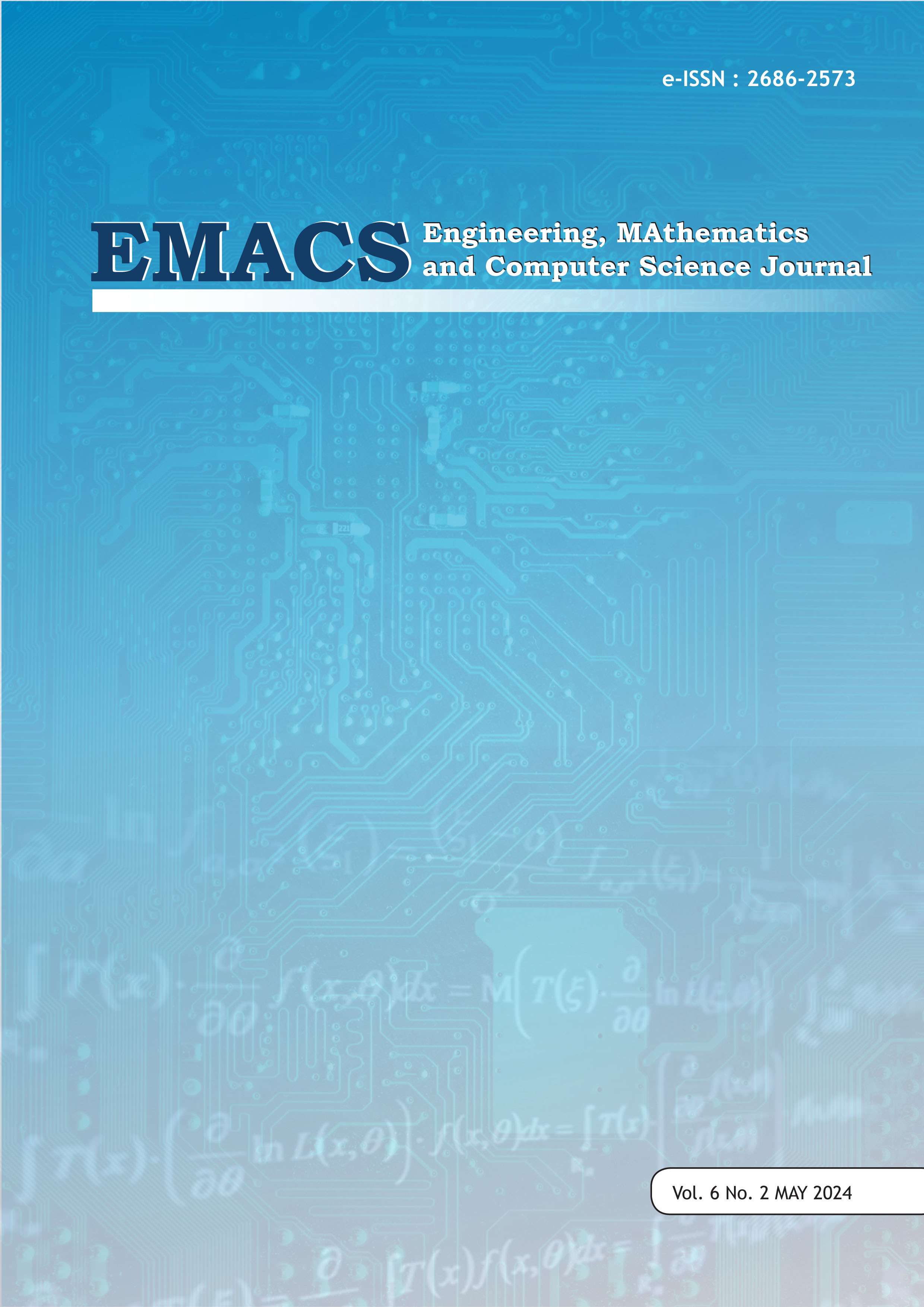Comparison HOR and AHP Methods in Risk Mitigation of Line Pipe Procurement
DOI:
https://doi.org/10.21512/emacsjournal.v6i2.11320Keywords:
Analytical Hierarchy Process (AHP), House of Risk (HOR), Line PipeAbstract
OCTG (Oil Country Tubular Goods) is a type of pipe used for oil and gas exploration activities. To meet the demands for the fulfillment of Line Pipe material needs at PT Pertamina EP. The results of the analysis and identification of risk factors from 3 Subjet Matter Expert (SME) in Line Pipe material procurement activities. From 13 Process Activities, 16 Risk Events (Ei) and 35 Risk Agents (Aj) were obtained. In House of Risk (HOR) 1, the results of the calculation of the Aggregate Risk Potentials (ARPj) value of 35 Risk Agents (Aj), the highest Aggregate Risk Potentials (ARPj) with a value of 810. In House of Risk (HOR) 2, the results of the calculation of the Effectiveness to Difficulty ratio (ETDk) value of 4 Preventive Action (PAk), the highest Effectiveness to Difficulty ratio (ETDk) value with a value of 4860. In the Analytic Hierarchy Process (AHP), the results of the calculation of the Consistency Ratio value of 5 Criteria Weight the highest Criteria value with a percentage of 45.4% and the Consistency Ratio of 4 Alternatives the highest Alternative value with a percentage value of 44.06%. The best alternative solution in the selection of mitigation strategies for contract type selection is “TFC (Technical Framework Contract)†with the highest percentage and value. The TFC (Technical Framework Contract) contract type is in accordance with the PTK-007 Revision 5 Chapter IV Contract guidelines.
References
Al-Mutaz, I. S., Gharghan, S. K., & Chuprat, S. (2017). Review of artificial lift methods for the optimization of crude oil production. Journal of Petroleum Exploration and Production Technology, 7(3), 803-819.
Atmowardoyo, H. (2018). The Performance Relationship of Effective Risk Management: Exploring the Firm-Specific Investment Rationale. Long Range Planning, 9(1), 83-95.
Fadilla, M. A., & Rakhmah, S. N. (2022). Decision Support System for Determining Performance of Medical Recorders Using the AHP Method at Kartika Husada Hospital Bekasi. INSANI ICT JOURNAL, 9(1), 33-42.
Fowler, F. J. (2002). Survey Research Methods. (Third Edition) Thousand Oaks: Sage Publications, Applied Social Research Methods Series Volume 1.
Hadi, A. J., Febrianti, A. M., Yudhistira, A. G., & Qurtubi. (2020). Identify Supply Chain Risks using the House of Risk (HOR) Method. Performance: Industrial Engineering Scientific Media, 19 (2), 85-94.
Hafiyusholeh, M., & & Asyhar, A. H. (2016). Priority Vectors in Analytical Hierarchy Process (AHP) Using the Eigen Value Method. Journal of Mathematics, 1(2), 44.
Handayani, W., & Rabihah, S. E. (2022). Risk mitigation in supply chain management process: procurement using house of risk method at PT. Pertamina EP Asset 4. Journal of Business Strategy, 26(1), 70-84.
Novita, L., Khasanah, S. N., & Eka, D. U. (2022). Decision Support System for Selecting the Best Salesman Using the Analytical Hierarchy Process Method at PT.Cahaya Esa Karunia Optima. Indonesian Journal on Software Engineering (IJSE), 8(1), 106-114.
Pribadi, S. R., Cahyani, Z. D., & Baihaqi, I. (2016). Study of the Implementation of the House of Risk (HOR) Model to Mitigate the Risk of Delays in Imported Materials and Components in New Ship Construction. ITS Engineering Journal, 5(2), 52-59.
Pujawan, I. N., & Geraldin, L. H. (2009). House of risk: a model for proactive supply chain risk management. Business Process Management, 15(6), 953-967.
Putri, R. N., & Tjaja, A. I. (2022). Proposed Risk Mitigation Strategy for Rail Fastening Product Business Processes Using the House of Risk (HOR) Model at PT. Pindad (Persero). FTI Dissemination Proceedings, 1-12.
Rovaldi, D., & Main, A. A. (2022). Selection of the Technical Framework Contract to Avoid Supply Failures of Oil Country Tubular Goods. European Journal of Business and Management Research, 8(1), 291-300.
Rukmi, A. Z. (2022). Proposed Risk Mitigation Strategy for Business Process Activities Using the House of Risk Method at PT. Coppal. Green Engineering: Journal of Green Technology, 6(1), 34-44.
Saaty, T. L. (1990). How to make a decision: The analytic hierarchy process. European Journal of Operational Research, 48(1), 9-26.
Saaty, T. L. (2008). Decision making with the analytic hierarchy process. International Journal of Services Sciences, 1(1), 83–96.
Saurabh, G., & Chouhan, D. T. (2015). Artificial Lift to Boost Oil Production. International Journal of Engineering Trends and Technology (IJETT), 6(1), 1-5.
Sembiring, M. T. (2018). ANALYSIS AND RISK MITIGATION IN SUPPLY CHAIN PT.XYZ. University of Northern Sumatra.
Downloads
Published
How to Cite
Issue
Section
License
Copyright (c) 2024 Muhammad Arwan Kholid, Christian Harito

This work is licensed under a Creative Commons Attribution-ShareAlike 4.0 International License.
Authors who publish with this journal agree to the following terms:
- Authors retain copyright and grant the journal right of first publication with the work simultaneously licensed under a Creative Commons Attribution License - Share Alike that allows others to share the work with an acknowledgment of the work's authorship and initial publication in this journal.
- Authors are able to enter into separate, additional contractual arrangements for the non-exclusive distribution of the journal's published version of the work (e.g., post it to an institutional repository or publish it in a book), with an acknowledgment of its initial publication in this journal.
- Authors are permitted and encouraged to post their work online (e.g., in institutional repositories or on their website) prior to and during the submission process, as it can lead to productive exchanges, as well as earlier and greater citation of published work.
USER RIGHTS
All articles published Open Access will be immediately and permanently free for everyone to read and download. We are continuously working with our author communities to select the best choice of license options, currently being defined for this journal as follows: Creative Commons Attribution-Share Alike (CC BY-SA)





